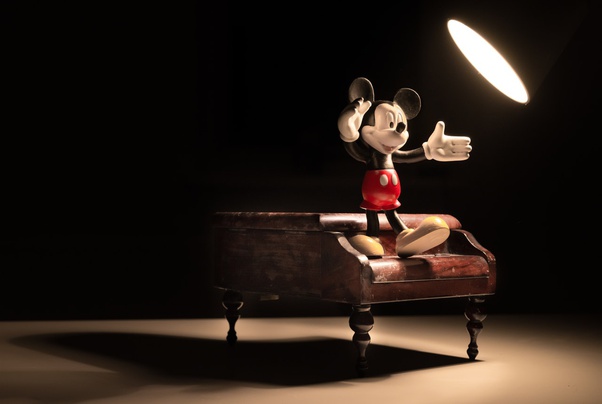
This article has been written by Yahaan Heerjee, pursuing the Diploma in Intellectual Property, Media and Entertainment Laws from LawSikho.
Table of Contents
Introduction
“All our dreams can come true if we have the courage to pursue them” as rightly quoted by Walt Disney. Most children have grown up watching and reading about Disney characters. The fascinating dream world that was created by Walt Disney would entice the adults as well. The question beyond our fascination is the legal aspect that entails it. In 1927, Walt Disney was making his way into the entertainment industry. After a fallout with Universal Studios, the Mascot of Walt Disney Mickey Mouse was created. Walt Disney wanted to keep all the rights to his characters, especially the beloved Mickey Mouse. The creative works of Walt Disney and his company have come a long way in protecting the characters under copyright law. The Disney Corporation has ensured that none of their characters fall into the public domain and in order for this to happen, they extend the copyright term as it sets to expire. In this article, copyright extension, as well as policy extension and its effect in India, have been highlighted.
The Disney Mascot
Copyright is a form of legal protection borne by the author for the exclusive right of his creative work. In order to protect the original work of the creator and the work from any sort of infringement as well as legal troubleshooting, copyright law is significant in the field of creativity. The copyright is issued for a fixed time period. On the expiration of the copyright, it falls into the public domain. The governing law on copyrights in the United States of America was the Copyright Act of 1909.
The Act granted copyright protection to original works that were
(a) published, and
(b) had a notice of copyright affixed to them which was fixed for a period of twenty-eight years from the date of publication, with the option for renewal for another twenty-eight years of protection.
Upon either the close of twenty-eight years (if there was no renewal of the copyright) or of fifty-six years (representing the initial twenty-eight-year protection term and an additional twenty-eight-year protection term upon renewal), the work would fall into the public domain. As a result, Mickey Mouse could only be protected until 1984 as fifty-six years would be completed. Mickey Mouse was not only the beloved Mascot of the company but also a huge source of revenue and had to be protected at all costs. The company was aware of the approaching deadline and to protect the character Disney took the step of lobbying Congress.
The role of Congress
The efforts Disney put in lobbying Congress paid off. The 1909 Act was displaced by the Copyright Act of 1976 passed by Congress. The new Act adopted a protection term for new copyrights based on the date of the author’s death as well as extended protection for certain existing copyrights. The time period of Mickey Mouse’s copyright was extended to seventy-five years from fifty-six years. The works published prior to 1922 had immediately entered the public domain and works published post-1922 were entitled to the full seventy-five years of protection. Hence, Mickey Mouse’s copyright protection was extended until 2003, which would sum up to be seventy-five years.
The Copyright Term Extension Act (CTEA) of 1998 came into the picture, as 2003 drew nearer and Disney resumed lobbying Congress. Some people jokingly refer to this Act as the “Mickey Mouse Protection Act”. This Act was favorable and it extended corporate copyrights from seventy-five years to ninety-five years. Mickey Mouse’s current copyright protection is set to expire on January 1, 2024.
Do all of Mickey Mouse’s copyrights expire?
For all the die-hard Disney fans it is a relief to know that not all of Mickey Mouse’s copyrights are going under the public domain. The original incarnation of Mickey Mouse which appeared in Steamboat Willie would first expire. The copyrights of later incarnations would still be owned by Disney. Therefore, in 2024 the public will be able to utilize the original Mickey Mouse without entailing a lawsuit of infringement.
The original Mickey Mouse is black and white with no gloves and in a style different from the Mickey Mouse we know. The modern Mickey Mouse is in full color and wearing gloves. In order to utilize the modern Mickey Mouse, the public will have to wait until 2025 as that is when the copyright of Mickey Mouse wearing gloves will expire. In order to utilize the sorcerer Mickey Mouse which first appeared in the 1940 film, Fantasia, the public will have to wait until 2036 as that is when the copyright of sorcerer Mickey Mouse will expire. The bigger question is if Mickey Mouse’s copyright expiration is inevitable and it is rightly so. Rather than extending the copyright period, Congress has left them under The Copyright Term Extension Act (CTEA) of 1998 as it is.
Benefits of author’s copyright
The creative work must be protected as it not only generates revenue but also inculcates cultural knowledge. When the authors can reap the benefits of their work for a fixed period of time it encourages them to create more work. The purpose of copyright is basically allowing monopoly at the hands of the creator itself. The copyright as a legal pillar along with the fixed long duration gives an incentive to the authors to explore their creativity. The exclusivity given to the author is beneficial for the public as well as the author. The amalgamation of exclusivity and longevity is the foundation of copyright. Copyright is an extension of the creator’s persona. If the creativity is distorted or tarnished the interest to create more would cease to exist. If there is a slight chance that the creative works would fall under the public domain in no time after its creation, the author would sacrifice the quality of its work. Here, neither the author would benefit nor the public as the culturally rich works would cease to exist. Mickey Mouse is not just a cartoon character we watch on screen but a whole Disney World dedicated to it which is a feast for the eyes. There are theme parks, toys, different products, animated works, etc. based on Mickey Mouse. If the copyright on Mickey Mouse is for a short period of time, no investor would show interest as it will not culminate. This in return would stop the production of the creative works. The copyright is not inherent but statutory, given by the sovereign.
There was a study conducted in 2003, which proved that the two major copyright changes before CTEA, the Copyright Act of 1976 and the 1988 Berne Convention, had significant effects on copyright registrations. There was another study conducted in 2006 that proved that countries that extended the term of copyright saw a significant increase in movie production. This shows that copyright is in the best interest of the creator.
Trademark underlying Mickey Mouse
Trademark is a form of Intellectual property that refers to a phrase, word or symbol that gives recognition to a specific product and helps in legally differentiating it from all other products of its kind. A trademark helps in identifying the product under the brand owner of a company.
The first trademark registration of the World’s Most Iconic Character was made in 1928 in the month of May. It was first held by Walt Disney himself and is currently held by Disney Enterprises, Inc; a subsidiary of the Walt Disney Company. The trademark is mandatory to be renewed every ten years. The trademark was last renewed in 2018. There are nineteen trademark registrations for the words “Mickey Mouse”. Disney also has trademark registrations for Mickey’s visual appearance for animated and live-action motion picture films. Disney also has the right to license or assign the marks to others. The causes of action for trademark infringement may include inter alia dilution, false advertising, and unfair competition.
The case of Frederick Warne & Co. gives Disney the benefit of dual copyright-trademark protection. In this case, it was held that if the character had obtained “secondary meaning” it was subject to dual protection. Mickey Mouse is so prominent that it is synonymous with Disney. This provision is limited to the expiration of Mickey Mouse’s copyright.
In India, the media and entertainment industry is still in its nascent stage. The time period for Copyright protection under the Indian Copyright Act is for 60 years from the death of the author. In 2008 Yash Raj and FICCI had approached the HRD Ministry to extend the copyright term to 95 years as was provided in the CTEA. The ministry was welcoming and gave an extension of the copyright term for the Copyright Amendment Act, 2010. This amendment has benefitted the director as he/she will have copyright protected for 70 years as opposed to the producer who has a term for only 60 years.
Conclusion
As long as Congress is on the ride along with Disney, Disney will continue with the copyright term extension. The political climate is dynamic so the copyright extension may not last for too long. Disney will ultimately have to rely on its trademarks which are not very beneficial to its other characters. Before the clock strikes midnight, all Disney fans would love to see the copyright protected indefinitely.
References
- https://digitalcommons.law.wne.edu/cgi/viewcontent.cgi?article=1830&context=lawreview.
- https://www.mondaq.com/india/copyright/558114/the-mickey-mouse-debate.
- https://www.investopedia.com/terms/t/trademark.asp.
Students of Lawsikho courses regularly produce writing assignments and work on practical exercises as a part of their coursework and develop themselves in real-life practical skills.
LawSikho has created a telegram group for exchanging legal knowledge, referrals, and various opportunities. You can click on this link and join:
 Serato DJ Crack 2025Serato DJ PRO Crack
Serato DJ Crack 2025Serato DJ PRO Crack









 Allow notifications
Allow notifications



